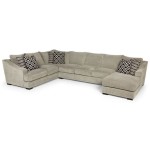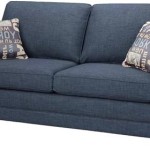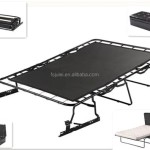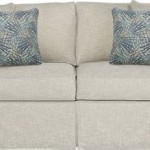How to Recover a Sectional Sofa: A Comprehensive Guide
A sectional sofa is a significant investment and a focal point of many living spaces. Over time, however, wear and tear, spills, and general aging can take a toll on the fabric, leaving the sofa looking tired and worn. While purchasing a new sectional may seem like the only option, recovering the existing sofa is a cost-effective and environmentally responsible alternative. This process, while potentially time-consuming, allows for a personalized upgrade, enabling a change in fabric, style, and overall aesthetic. This article provides a comprehensive guide on how to recover a sectional sofa, covering preparation, disassembly, fabric selection, cutting, sewing, and reassembly.
Key Point 1: Preparation and Assessment
Before embarking on the recovery process, thorough preparation and assessment are crucial. This initial stage determines the feasibility of the project and ensures a smooth workflow.
First, evaluate the structural integrity of the sectional sofa. Examine the frame for any signs of damage, such as cracks, warping, or loose joints. If the frame is compromised, recovering the sofa might not be a worthwhile investment, as the underlying issues will persist despite the new fabric. Repairing the frame, if possible, should be addressed before proceeding with the recovery process.
Next, assess the complexity of the sectional's design. Sectionals with intricate details, numerous cushions, and complex curves will require more advanced sewing skills and a greater time commitment. Simpler designs are more suitable for beginners. Consider the number of individual sections and how they are connected. Documenting this information through photographs and sketches will be invaluable during the reassembly stage.
Finally, gather the necessary tools and materials. This includes a staple remover, pliers, screwdrivers, a sewing machine, fabric scissors, measuring tape, chalk or fabric markers, pins, seam ripper, new staples, and, of course, the new fabric. Having all the required items readily available will streamline the process and prevent unnecessary delays. The type of staples needed will depend on the existing staples used and the staple gun being utilized.
Key Point 2: Disassembly and Pattern Creation
Disassembly is a critical stage that requires careful attention to detail. The original fabric pieces will serve as patterns for cutting the new fabric, making accurate removal and preservation essential.
Start by carefully removing the existing fabric. Use a staple remover and pliers to gently lift and remove the staples. Avoid tearing the fabric if possible. Work methodically, section by section, and label each piece as it is removed. Use masking tape and a permanent marker to clearly identify the location and orientation of each piece. For instance, label a piece as "Left Arm Outer Panel" or "Seat Cushion Top." This step is critical for accurate reassembly.
Pay close attention to how the fabric is attached, particularly in areas with seams, pleats, or buttons. Take photographs or make sketches to document these details. This will be particularly helpful when replicating these features on the new fabric.
Once all the fabric pieces have been removed, they will serve as patterns for cutting the new fabric. Lay each piece flat on the new fabric, ensuring that the grain direction aligns correctly. The grain direction is the direction of the warp and weft threads in the fabric. Incorrect grain alignment can lead to uneven stretching and distortion of the finished product. Use chalk or fabric markers to trace around each pattern piece, adding seam allowances. A seam allowance of at least 1/2 inch is recommended to allow for sewing and adjustments. Consider adding extra allowance in high-stress areas or for fabrics that are prone to fraying.
For complex shapes or areas with curves, consider using pattern weights to hold the fabric in place while tracing. If a pattern piece is damaged or unusable, it may be necessary to create a new pattern by carefully measuring the corresponding area on the sofa frame and adding seam allowances.
Key Point 3: Fabric Selection, Cutting, and Sewing
The choice of fabric significantly impacts the durability, appearance, and overall comfort of the recovered sectional sofa. Selecting the right fabric and executing precise cutting and sewing are crucial for a successful outcome.
Choose a fabric that is durable, stain-resistant, and suitable for upholstery. Consider factors such as the frequency of use, the presence of pets or children, and the overall aesthetic of the room. Common upholstery fabrics include cotton blends, linen, polyester, microfiber, and leather. Each fabric has its own advantages and disadvantages in terms of durability, maintenance, and cost. Before purchasing a large quantity of fabric, obtain samples to test for colorfastness, durability, and ease of cleaning. Also, ensure sufficient yardage has been calculated to cover all sections, taking into account pattern repeats and potential errors. It is wise to purchase slightly more than calculated to accommodate unforseen challenges.
Once the fabric has been selected and the patterns have been traced, it is time to cut the fabric pieces. Use sharp fabric scissors to cut along the marked lines, ensuring clean and accurate cuts. Cutting precisely along the traced lines is critical for a professional-looking finish. For fabrics that fray easily, consider using a rotary cutter and a cutting mat.
With all the fabric pieces cut, begin sewing the seams together. Use a sewing machine with a needle and thread appropriate for the chosen fabric. Start by sewing the smaller pieces together, such as cushion panels or armrest sections. Refer to the photographs and sketches taken during disassembly to ensure that the seams are sewn in the correct order and orientation. Use pins to hold the fabric pieces together before sewing, and remove the pins as you sew. Backstitch at the beginning and end of each seam to secure the stitches.
For areas with curves or corners, clip the seam allowance to allow the fabric to lie flat. This involves making small cuts into the seam allowance, almost up to the seam line, without cutting through the stitches. This technique helps to prevent puckering and ensures a smooth, professional finish. If the original sectional had any decorative elements, such as piping, buttons, or tufting, replicate these features on the new fabric.
Key Point 4: Reassembly and Finishing
Reassembly is the final stage of the recovery process, requiring patience and attention to detail to ensure a snug and professional fit.
Begin by attaching the newly sewn fabric pieces to the sofa frame, working section by section. Start with the inner panels and work outwards. Use a staple gun and new staples to secure the fabric to the frame, pulling the fabric taut as you go. Ensure that the staples are driven in straight and flush with the frame to prevent them from snagging or scratching. Refer to the photographs and sketches taken during disassembly to ensure that the fabric is attached in the correct location and orientation.
Pay particular attention to the corners and edges, ensuring that the fabric is neatly tucked and secured. Use a rubber mallet to gently tap the staples in if necessary. For areas with curves or intricate details, take your time and work carefully, adjusting the fabric as needed to achieve a smooth and even finish. When reattaching cushions, ensure they are properly stuffed and evenly distributed within the cushions.
Once all the fabric has been attached, inspect the entire sectional sofa for any loose staples, uneven seams, or wrinkles. Trim any excess fabric and re-staple any areas that need additional reinforcement. If necessary, use a needle and thread to hand-stitch any areas that are difficult to reach with the staple gun. Clean the recovered sectional sofa with a vacuum cleaner or a soft brush to remove any dust or debris. This will help to maintain the appearance and extend the lifespan of the new fabric.
Following these steps will enable the successful recovery of a sectional sofa, resulting in a refreshed and revitalized piece of furniture that will enhance any living space.

How To Reupholster A Couch Taking Boring Brown Sectional From Basic Beautiful

How Much Does It Cost To Reupholster A Sectional Sofa

How To Re Cover A Microfiber Sectional Couch Makeover Retro Home Decor

How Much Does It Cost To Reupholster A Sectional Sofa

No Sew Couch Reupholster Time For A New

How Much Does It Cost To Reupholster A Sectional Sofa

How To Fabric Measurements For Sectional Sofas

Tutorial Diy Upholstery Sofa Rehab A Jennuine Life

How Much Does It Cost To Reupholster A Sectional Sofa

How To Reupholster A Sectional Couch








